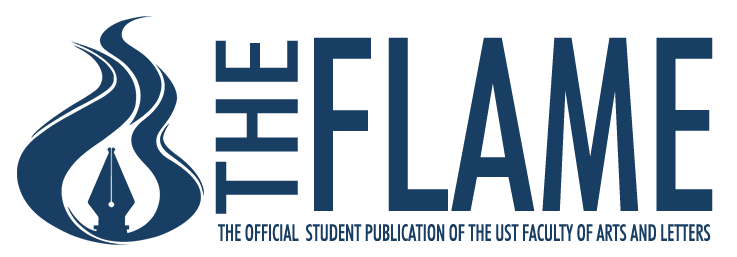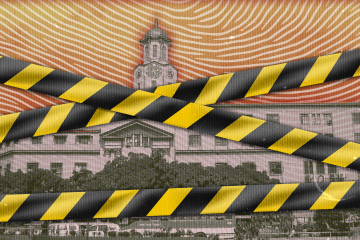
AFTER THE 7-Eleven photo ruckus that ignited calls for reforms in the University’s treatment of student organizations, hopes were high that the administration would create an environment more conducive for campus press freedom and critical thinking.
But according to the executive editor of TomasinoWeb, the campus media entity continues to grapple with constraints that affect its operations, including what she claimed to be unprecedented requirements for staffers covering off-campus events.
While none of its contents have been censored or watered down so far, TomasinoWeb admitted to becoming more “mindful” of its reportage to protect its staff and to avoid tussles with the Office for Student Affairs (OSA), the same office that pressured its editors to take down a photo that supposedly subjected UST to ridicule last year.
“After the 7-11 fiasco, we became more confident in coming up with stories. That’s the only notable change for now,” TomasinoWeb executive editor Mary Jade Jadormio told The Flame.
“I couldn’t say that we gained more freedom, but TomasinoWeb has been brave ever since,” she added.
Jadormio said the OSA has issued a directive requiring all members of UST-recognized student organizations to submit a medical certificate and a signed and notarized parental consent for every off-campus activity. TomasinoWeb is covered by the requirement since it is considered a student organization, not a campus publication that enjoys greater freedom from the interference of school administrators.
“For us, it is such a hassle… What they (OSA) want…is every off campus activity needs to be filed… I don’t want this because… our editorial autonomy and independence is affected,” Jadormio said.
She added that the lengthy processes of acquiring medical certificates and notarized consent forms, on top of financial costs, limited the operations of TomasinoWeb.
“For now, only those who have passed medical certificates and parental consents are allowed for off-campus coverages,” the student editor said.
More than half of TomasinoWeb’s staff members cannot take part in off-campus media coverage since they have yet to comply with the requirements.
Jadormio said OSA had explained to the TomasinoWeb that the requirement has to be met because of possible untoward incidents during an off-campus event. But she believes the requirement is not compatible with the unpredictable nature of news coverage.
“If something happens, they (OSA) will be asked about it because we are under OSA,” Jadormio said.
“My concern really is it’s not the nature of journalism. If, for example, you pass by an area where there is a fire, you have to ask your editor whether you will cover it or not. I raised these kinds of issues to them. If we see something newsworthy, if we happen to be around while something is unfolding, will we send an email (seeking permission to cover it)? And they said yes,” she added.
While TomasinoWeb was able to lobby for a blanket permit that covers all events, it still has to ask permission from the OSA for each off-campus coverage.
“Sobrang hassle kasi kailangan bawat kibot na nasa labas kami, kailangan naming i-inform sila (It’s a hassle because we have to inform them of our every move if we are outside the University),” Jadormio said.
“In the 17 years of TomasinoWeb, this is the first time an off-campus activity permit is required when you’re covering something,” she added.
The Flame has reached out to OSA for comment but has yet to get a response. This story will be updated once the office reacts to TomasinoWeb‘s statements.
The anatomy of a fiasco
The image that ignited a social media firestorm was published on Feb. 15, 2024, as part of a TomasinoWeb album of Thomasians wearing their type B uniforms.
The photo, which showed College of Information and Computing Sciences (CICS) students entering the 7-Eleven branch at the Quadricentennial Pavilion, gained traction online when people noticed the similarities between their uniform and that of the convenience store personnel. Some claimed the type B uniform of CICS, a red collared shirt with the college’s patch for the front and a cream-colored base for the top back part, resembles that of the 7-Eleven employee’s polo shirt, a white and maroon polo with the store’s logo on the chest area.
It was revealed later on that OSA officials had forced TomasinoWeb editors to remove the photo, even threatening them of non-accreditation if they fail to do so. The incident sparked a widespread backlash, made headlines and placed the spotlight on the University’s policies on student organizations.
Some Thomasian alumni also stood by the campus media entity and called for an end to what they described as OSA’s “repressive, arbitrary, and outdated policies.”
The controversy also penetrated the House of Representatives, with Kabataan Partylist Rep. Raoul Manuel filing a resolution seeking an investigation on OSA’s censorship against TomasinoWeb and “other violations of student democratic rights.”
READ: House reso seeks probe on TomasinoWeb censorship, ‘democratic rights violation at UST’
The controversy also prompted TomasinoWeb adviser Leo Laparan II to resign and to file an administrative complaint against then OSA director Maria Tio Cuison and her deputy Asst. Prof. Regina Arriero for allegedly “engaging in unduly and illegal media censorship.”
In March, UST announced that Tio Cuison would go on medical leave and that Asst. Prof. Jaezamie Ong would serve as OSA officer-in-charge. The University also vowed to hold a dialogue with student organizations to discuss “student-related policies and guidelines,” including those under the Campus Journalism Act, a law that guarantees student journalists’ right to free expression.
The beleaguered OSA director never returned to her post as her replacement was named after nine months.
Last January, Ong, who had committed to making UST student organizations “very lively” under her watch, was appointed director of OSA.
In an interview with The Flame last year, Ong said she would support student activities and promised to review the policies that others view to be “problematic.”
Despite the administrative case filed against her, Arriero was retained as OSA deputy director.
READ: Q and A with OSA’s officer-in-charge
Closely monitored
Jadormio acknowledged that the controversy has made TomasinoWeb‘s communication with OSA faster and easier, but has also placed the media entity under firmer supervision.
“Malaking impact din yung 7-Eleven issue ngayon kasi ayun, parang binabantayan kami lalo ng OSA ngayon, lalo dun sa off-campus activities…Madali silang lapitan actually pero madali rin nila kaming makita ngayon,” she said.
(The 7-Eleven issue has had a huge impact because OSA is closely monitoring us, especially in terms of off-campus activities. It is now easier to approach them but it is also easier to spot us now).
More than a month after the 7-Eleven photo takedown, OSA sought feedback and suggestions from recognized university-wide organizations to assess its policies on student activities. The dialogue involved the technical working group formed by UST Rector Fr. Richard Ang, O.P. to review student-related policies and guidelines. There has been no available updates on the dialogue as of writing.
In a speech that marked the start of his second term as rector last September, Ang committed to “fully support the holistic development of the student body” and directed the OSA to review its policies and management of student welfare development committees.
Jadormio said the OSA has required TomasinoWeb to subject all its contents to the approval of an adviser. The media entity must also put a note indicating OSA’s approval under the publication materials.
According to the University’s rules on student organizations, a recognized student organization must have an adviser who is currently employed on a full-time basis and is not currently advising any other student organization.
While UST has not flagged a single TomasinoWeb post this year, Jadormio admitted to being “mindful” of the campus media entity’s reportage, citing past encounters with OSA. She noted that in the past, TomasinoWeb had received notices for posts that were seen as violating the University’s guidelines.
“We are not really afraid. Personally, I did not lie low. But I am more mindful for the safety of my members. I do not want them to sacrifice,” the student journalist said. F



